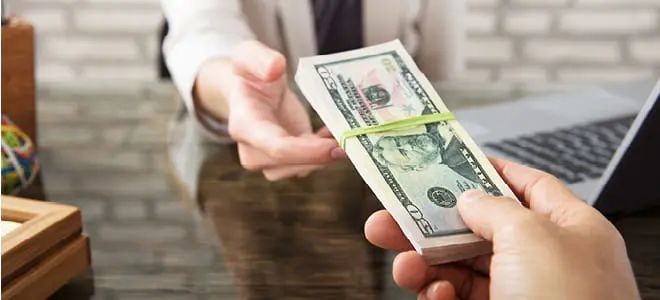How to Tell the Difference Between Good Debt and Bad Debt

- Some types of debt can improve your finances, while other types can hurt them.
- Understanding the difference between good debt and bad debt could help you make more informed borrowing decisions.
- If you're juggling debt, it's important to try to get rid of bad debt first.
If you’re carrying debt, you’re in good company. The Federal Reserve says total U.S. household debt reached $18.2 trillion during the first quarter of the year.
Of course, that $18.2 trillion figure accounts for both good debt and bad debt. And it’s important to understand the difference, and hopefully avoid the need for debt relief down the road. Let’s review good debt versus bad debt so you can make savvy borrowing decisions and know which of your existing debts to try to tackle first.
What Is Good Debt?
Good debt is debt that helps your financial situation improve. You may not get positive results immediately when you take on good debt. But over time, taking on good debt should help you reach different financial goals.
Here are some examples of good debt.
Mortgages
A mortgage is considered good debt because it allows you to buy a home that could gain value over time, which real estate tends to do. Say you take out a $200,000 mortgage to buy a $250,000 house. By the time you pay off your mortgage in 30 years, your house could be worth $750,000.
Mortgages also tend to come with much lower interest rates than other types of debt. The average 30-year mortgage rate in the summer of 2025 is 6.86%. The average credit card interest rate is 24.28%.
Auto loans
Cars don’t tend to gain value over time like homes do. But an auto loan can still be considered good debt because it’s not just an expense. If you borrow for a car, and the car lets you work and earn an income, then that loan is helping you improve your financial situation.
Student loans
It’s okay to consider student loans an investment in your career and earnings potential, as long as your payments are manageable. The Social Security Administration says that men with bachelor's degrees earn about $900,000 more in median lifetime earnings than people with only a high school diploma. Women with bachelor's degrees, meanwhile, earn $630,000 more.
This isn’t to say that you can’t do well in your career without going to college. The point, rather, is that an education can improve your financial situation over time. Student loans that let you get that education can, to an extent, be considered good debt.
What Is Bad Debt?
Bad debt is debt that doesn't help your financial situation, but rather, hurts it. It’s best to limit the amount of bad debt you rack up or, if possible, avoid it completely.
Here are some examples of bad debt.
Credit card debt
Toward the end of 2024, Americans had an average of $6,730 in credit card debt, according to Experian, one of the three credit bureaus. So if you owe money on your credit cards, you’re not alone. It’s hard to get out of credit card debt.
The reason credit card debt is typically considered bad debt is that the expenses you’re charging on your credit cards aren’t usually ones that can improve your financial situation. Concert tickets and restaurant meals may be fun things to enjoy, but they won’t help you grow your net worth or earn money. And while you can benefit from a new couch you charge on a credit card, it usually won’t increase in value over time.
This isn’t to say that you shouldn’t treat yourself to these types of purchases. But a better strategy is to save up for them rather than put them on a credit card that charges you interest. In fact, another problem with credit cards is that they typically charge a lot of interest. So once you start carrying a balance, the amount of interest you accrue can add up to far more than the cost of the things you bought.
People just like you are seeking debt relief in Colorado Springs, CO and across the country. The first step is the most important one—explore your options.
Payday loans
Payday loans are short-term loans that can bridge the gap between when you need money and when your next paycheck arrives. The problem is that they're notorious for charging very large fees and interest. So much, in fact, that most payday loan borrowers can’t afford to repay the debt when it’s due. So they have to keep borrowing again and again until they can finally pay off the debt. Any money you spend on interest and fees is money you can't save for future goals.
Personal loans
You can use a personal loan to pay for almost anything, whether it's a vacation, furniture, or apparel. Personal loans are bad debt if you use one to pay for things that don't gain value or help you improve your financial situation.
If you use a personal loan to pay for a class that helps you boost your job skills, a personal loan could be considered good debt.
Also, some people use personal loans for debt consolidation purposes. If a personal loan is part of a good financial plan and you’re using it to pay off other debts that are costlier, consider it a good debt.
Know Which Debts to Pay off First
Understanding the difference between good debt and bad debt could help you make healthier borrowing decisions. It’s also important to recognize the difference between good debt and bad debt if you’re struggling to keep up with your debt and want to know what to pay off first.
It’s a good idea to pay off bad debt ahead of good debt. If you owe money on a mortgage, auto loan, and credit cards, prioritize your credit card balances. And within the bad debt category, you may want to pay off your debt in order of highest interest rate to lowest.
Let’s say you owe $4,000 on a credit card with a 27% APR, $3,000 on a credit card with a 24% APR, and $8,000 on a personal loan with an 8% APR. You should pay off your debt in that order, since tackling your highest interest rate first could save you the most money. This technique is called the debt avalanche method.
If you have so much debt that it’s overwhelming, look into whether a debt relief program is right for you. A debt relief company may be able to negotiate your bad debts so you can recover financially and move forward.
Insights into debt relief demographics
We looked at a sample of data from Freedom Debt Relief of people seeking debt relief during November 2025. The data provides insights about key characteristics of debt relief seekers.
FICO scores and enrolled debt
Curious about the credit scores of those in debt relief? In November 2025, the average FICO score for people enrolling in a debt settlement program was 593, with an average enrolled debt of $24,913. For different age groups, the FICO scores varied. For instance, those aged 51-65 had an average FICO score of 596 and an enrolled debt of $26,572. The 18-25 age group had an average FICO score of 567 and an enrolled debt of $15,791. No matter your age or debt level, it's reassuring to know you're not alone. Taking the step to seek help can lead you towards a brighter financial future.
Credit card debt - average debt by selected states.
According to the 2023 Federal Reserve Survey of Consumer Finances (SCF) the average credit card debt for those with a balance was $6,021. The percentage of families with credit card debt was 45%. (Note: It used 2022 data).
Unsurprisingly, the level of credit card debt among those seeking debt relief was much higher. According to November 2025 data, 88% of the debt relief seekers had a credit card balance. The average credit card balance was $15,182.
Here's a quick look at the top five states based on average credit card balance.
| State | Average credit card balance | Average # of open credit card tradelines | Average credit limit | Average Credit Utilization |
|---|---|---|---|---|
| Alaska | $18,833 | 7 | $24,102 | 80% |
| South Dakota | $15,343 | 9 | $28,791 | 80% |
| District of Columbia | $13,535 | 9 | $27,261 | 79% |
| Alabama | $13,087 | 8 | $25,731 | 79% |
| Michigan | $13,909 | 8 | $26,156 | 78% |
The statistics are based on all debt relief seekers with a credit card balance over $0.
Are you starting to navigate your finances? Or planning for your retirement? These insights can help you make informed choices. They can help you work toward financial stability and security.
Regain Financial Freedom
Seeking debt relief can be the first step toward financial freedom. Are you struggling with debt? Explore options for debt relief to regain control of your finances. It doesn't matter how old you are or what your FICO score or credit utilization is. Take the first step towards a brighter financial future today.
Show source
Author Information

Written by
Maurie Backman
Maurie Backman is a personal finance writer with over 10 years of experience. Her coverage areas include retirement, investing, real estate, and credit and debt management.

Reviewed by
Kimberly Rotter
Kimberly Rotter is a financial counselor and consumer credit expert who helps people with average or low incomes discover how to create wealth and opportunities. She’s a veteran writer and editor who has spent more than 30 years creating thousands of hours of educational content in every possible format.
How much debt is too much?
An important sign that you have too much debt is if you struggle to make your payments from month to month.
Another red flag is if you usually carry a credit card balance. Even if you’re keeping up with your payments, carrying a credit card balance dramatically increases the cost of everything you buy with the card. Look at your total year-to-date interest charges on your next credit card statement and ask yourself if you’d rather have that money in the bank. If the answer is yes, you might have too much credit card debt.
How much credit card debt is normal?
What’s normal for one person might be troubling for another. The best amount of credit card debt is the amount that you can afford to pay off when you get the bill. A person’s total financial picture, including salary, financial goals, and other debts, could give a better sense of what’s manageable.
What kind of debts are resolved in a debt resolution program?
Generally, debt resolution programs are designed to help you with unsecured debt. That includes credit cards and unsecured personal loans. If you need help with tax debt or federal student loans, there may be debt resolution companies or attorneys that specialize in those types of financial obligations.

